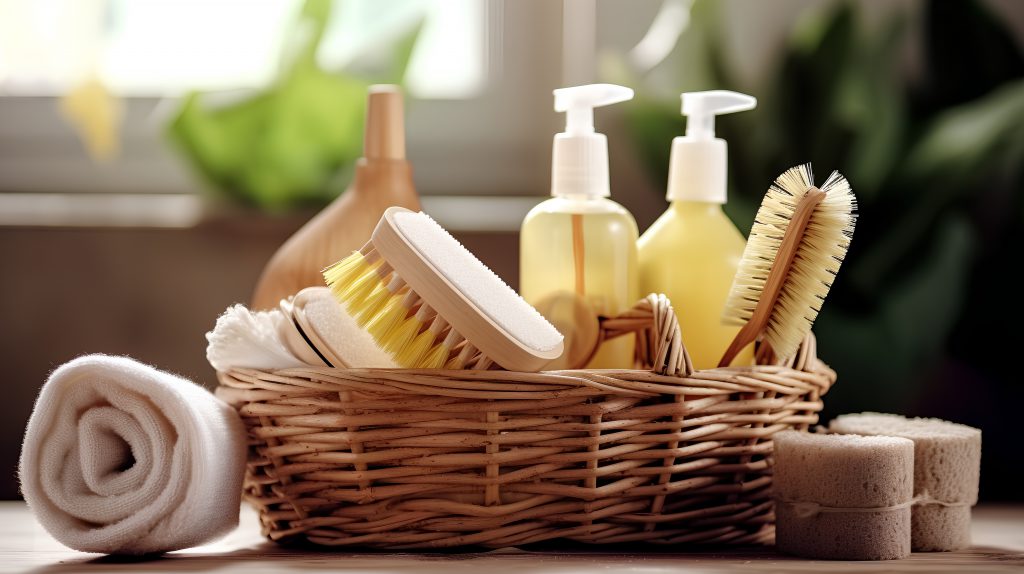
How to Create a Clean Living Lifestyle
March 5, 2020
Processed food, hidden additives, environmental toxins, cleaning chemicals, plastics, cosmetics, cookware, fabric softeners, electronics…the list of hidden toxins that we encounter everyday goes on and on. Many people have chosen to join the clean-living movement but, what does clean living really mean? Let’s start with what we eat.
In This Healthy Insight:
- Clean Eating Tips
- Household Product Swaps
- Importance of What You Put ON Your Body
- Other Suggestions
Eating Clean isn’t just a fad, it’s a lifestyle choice that leads to improved health and overall wellness.
Some clean eating tips to follow:
- Choose real foods over processed foods
- Eating balanced meals
- Include more plant-based foods
- Load up on fruits and veggies
- Watch out for added sugar and sodium
Household products are a major source of hidden toxins.

- Many cleaning supplies and air fresheners contain harmful chemicals, so switch to natural products.
- Plastic food and beverage containers break down over time releasing harmful chemicals. Consider glassware instead.
- Fabric softeners coat your clothes with a thin layer of potentially toxic substances. Essential oils on a wash cloth will add fragrance without toxins.
- Shower curtains may contain phthalates to soften the plastic.
- Many mattresses have PBDE compounds. This is especially important for small children to avoid.
- At high temperatures, non-stick cookware can give off toxic gas.
It’s important to pay attention to what you put ON your body, not just in. What should you look out for?
- Butyl acetate in nail polish and strengtheners
- Butylated hydroxytoluene in concealer and liquid makeup
- Diethanolamine in foaming products, shampoos, shaving creams and moisturizers
- Formaldehyde in deodorant, eyelash adhesives and some shower products
- Fragrance usually is an umbrella term for a plethora of harmful chemicals
- Talc in eye makeup, blush, baby powder, deodorant and soap
- Preservatives such as parabens
Other suggestions to live a clean, sustainable lifestyle

- Use energy efficient light sources (they last longer too!)
- Walk, bike or carpool whenever possible
- Reduce, reuse and recycle
- Reduce energy usage by unplugging devices when not in use
- Purchase products with less packaging options & using reusable grocery bags
- Turn off water when not in use such as when washing dishes or brushing your teeth
- Start growing your own food
While the list here may seem daunting, try to incorporate one or two a week. In no time at all you’ll be living clean and enjoying a much healthier lifestyle.


